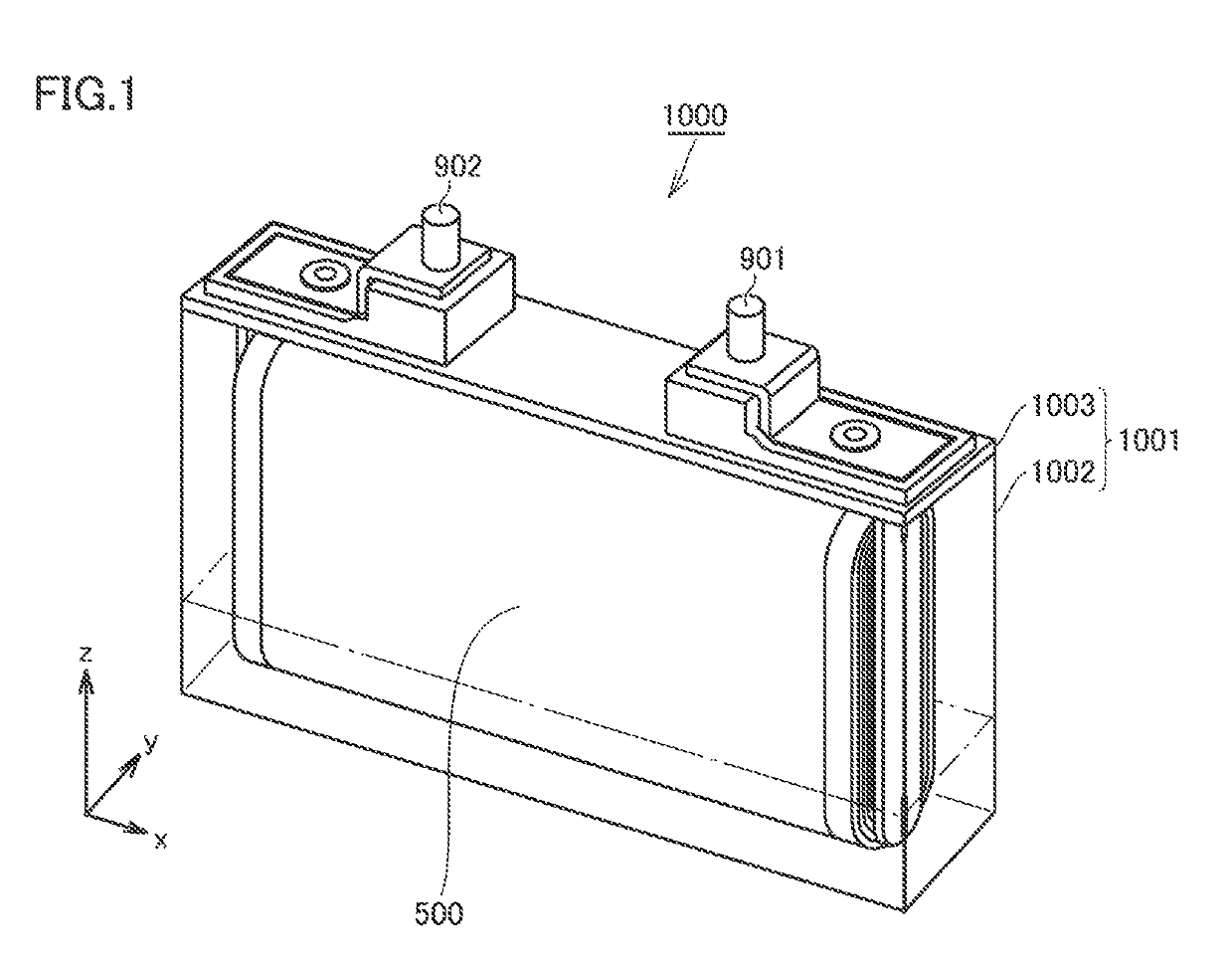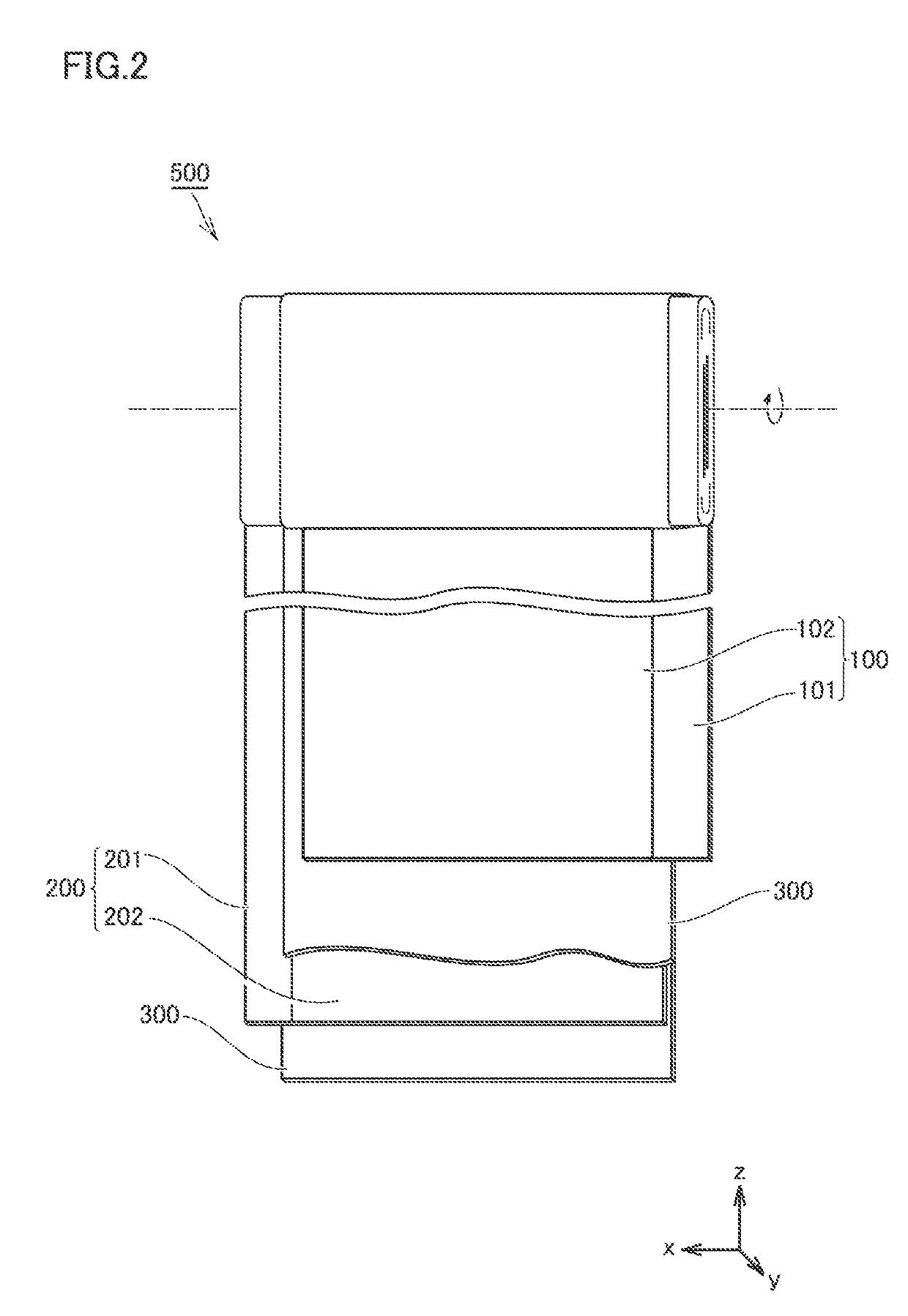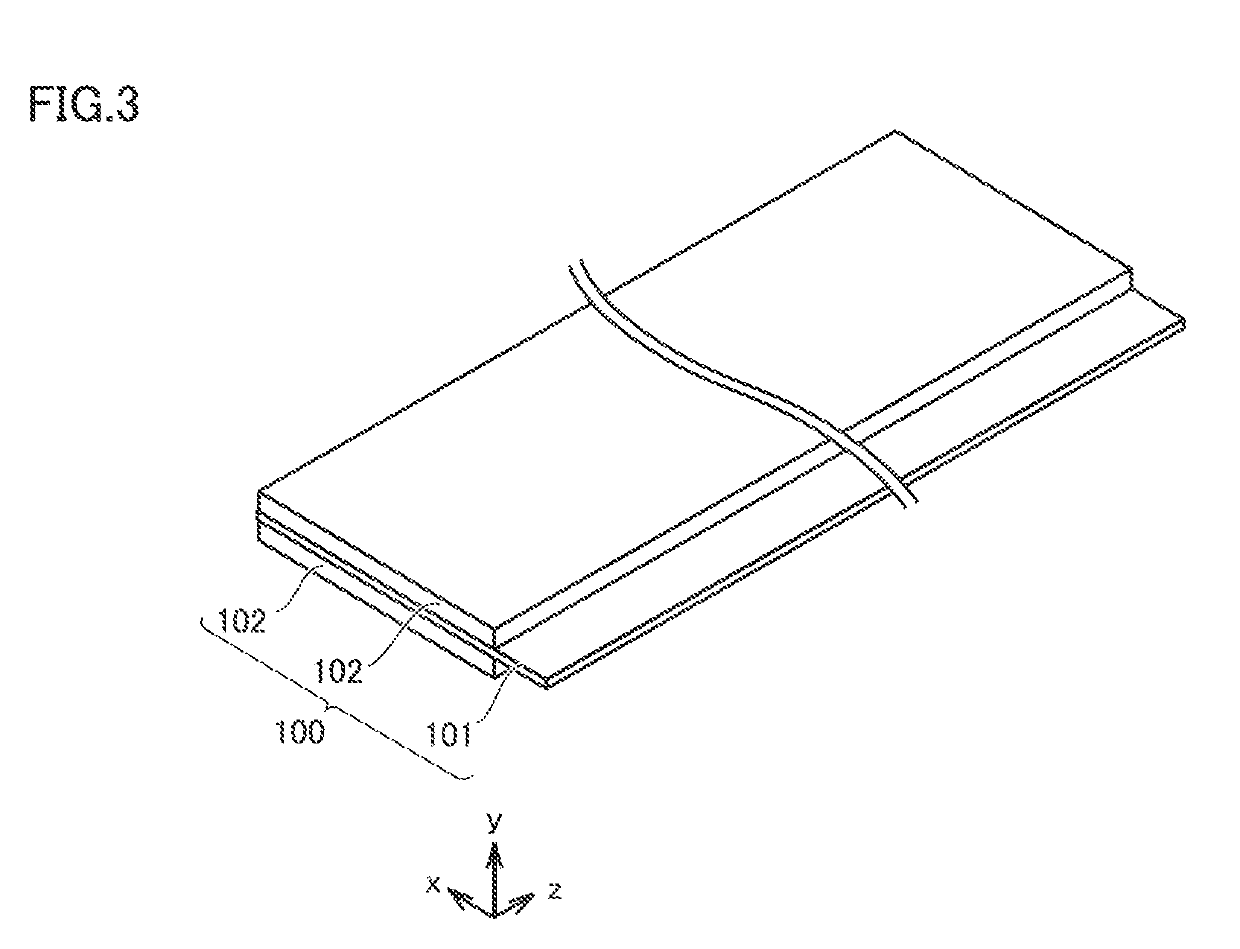Positive electrode plate and non-aqueous electrolyte secondary battery
a technology of positive electrode active material and secondary battery, which is applied in the direction of positive electrode, active material electrode, secondary cell servicing/maintenance, etc., can solve the problems that the thermal decomposition the heat generation of the positive electrode active material cannot be suppressed, so as to achieve the effect of suppressing the increase in resistance of the battery, reducing the cost of the battery and increasing the capacity of the positive electrode active material
- Summary
- Abstract
- Description
- Claims
- Application Information
AI Technical Summary
Benefits of technology
Problems solved by technology
Method used
Image
Examples
example 1
[0076]1. Preparation of Positive Electrode Plate
[0077]Materials below were prepared.
[0078]Positive electrode active material: NCM
[0079]Conductive material: AB
[0080]Binder: PVDF
[0081]Flame retardant: diammonium phosphate (thermal decomposition temperature: 150° C.)
[0082]Solvent: N-methyl-2-pyrrolidone (NMP)
[0083]Positive electrode current collector: Al foil (a thickness of 15 μm and a width dimension=130 mm)
[0084]A paste was prepared by mixing NCM, AB, PVDF, diammonium phosphate, and NMP. A ratio of mixing was set to “NCM:AB:PVDF:diammonium phosphate=94:1:1:4” at a mass ratio. Positive electrode composite material layer 102 was formed by applying the paste to a surface of positive electrode current collector 101 and drying the paste. Positive electrode composite material layer 102 (dried, on one surface) had a weight per unit area of 25 mg / cm2. Positive electrode composite material layer 102 had a width dimension of 110 mm. A concentration of P contained in positive electrode composi...
examples 2 to 12
[0114]Battery 1000 was manufactured as in Example 1 except for change in value (B / A) calculated by dividing porosity B (%) of positive electrode composite material layer 102 by content A (mass %) of P and S contained in positive electrode composite material layer 102 as shown in Table 1 below.
examples 13 to 16
[0115]Battery 1000 was manufactured as in Example 1 except for change in flame retardant contained in positive electrode composite material layer 102 and change in difference between thermal decomposition end temperature X of the electrolyte solution and thermal decomposition temperature Y of the flame retardant (which will simply also be denoted as “X−Y” below) as shown in Table 1 below.
PUM
| Property | Measurement | Unit |
|---|---|---|
| thermal decomposition temperature | aaaaa | aaaaa |
| thermal decomposition temperature | aaaaa | aaaaa |
| temperature | aaaaa | aaaaa |
Abstract
Description
Claims
Application Information
 Login to View More
Login to View More - R&D
- Intellectual Property
- Life Sciences
- Materials
- Tech Scout
- Unparalleled Data Quality
- Higher Quality Content
- 60% Fewer Hallucinations
Browse by: Latest US Patents, China's latest patents, Technical Efficacy Thesaurus, Application Domain, Technology Topic, Popular Technical Reports.
© 2025 PatSnap. All rights reserved.Legal|Privacy policy|Modern Slavery Act Transparency Statement|Sitemap|About US| Contact US: help@patsnap.com



